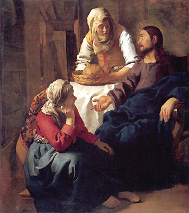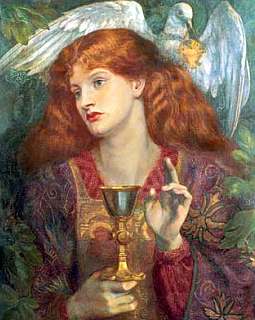 Alternative Histories?
Alternative Histories?
One of the key differences between the Protestant complementarian argument against women’s ordination and the Catholic argument concerns the significance of history. Specifically because the Catholic understanding of ordination presumes that clergy are “priests” and not merely “ministers of the gospel,” the Catholic argument assumes a continuity from the priesthood of the Old Testament to Jesus’ twelve apostles, from Jesus’ twelve apostles to the threefold office of bishop, presbyter (understood as “priest”) and deacon, and, through apostolic succession, a continuity from church office in the New Testament to contemporary clergy.
In addition, the new Catholic position in opposition to the ordination of women centers on a symbolic understanding of priesthood. Specifically, while speaking the Words of Institution (“This is my body,” “This is my blood”) in presiding at the Eucharist, the priest acts in persona Christi, not merely as a representative, but in some sense a representation, of Jesus Christ. Because Jesus Christ is male, it is claimed, the priest must be male. Moreover, this representational function also explains why not only Old Testament priests, but also Jesus’ twelve apostles, all NT office holders, and all clergy in the subsequent history of the church, must necessarily be male.
The connection between this history and the symbolic function of masculinity means that “tradition” is central to the Catholic argument in a way that it is not for the Protestant one. At the same time, the Catholic argument is encumbered with a problem that complementarian Protestants do not have. The Protestant argument is not based on male symbolism, but on male authority. Indeed, Protestants reject the Catholic in persona Christi position as “sacerdotal.” Nonetheless, Protestant complementarians can appeal to passages in both the Old Testament and the New Testament and in church history in which they claim that male leadership is connected to male authority. To the contrary, the Catholic position is not able to point either to Scripture or to history for the symbolic argument for the simple reason that it is a modern argument lacking in significant historical warrant.
In terms of history, there is no real evidence for such a theological understanding of ordination based on symbolic male sexuality before the mid-twentieth century. The OT nowhere suggests that Levitical priests represent a male YHWH and this is why they must be male. Jesus himself nowhere makes a connection between his own masculinity and the masculinity of the Twelve, or suggests that the Twelve are male because they play a symbolic role of representing a male Jesus. The New Testament discussions of the offices of bishop, presbyter, and deacon in the pastoral epistles and elsewhere nowhere suggest that bishops or presbyters must be male because they are successors of the twelve male apostles, or that presbyters or bishops represent a male Jesus in presiding at the Eucharist. Indeed, the NT writers make no references whatsoever to who presides at the Eucharist. There is also no discussion in the history of the church of clergy acting in persona Christi before the medieval period. Even then, the notion that the priest acting in persona Christi means that the priest represents Christ as male is not a medieval, but a modern notion.
Apart from the exception of a single passage in Bonaventure which seems immediately to have been forgotten, there do not seem to be any historic arguments against women’s ordination based on a male priest’s resemblance to a male Christ. Thomas Aquinas is the historic originator of the in persona Christi theory of eucharistiic celebration, but Aquinas makes no connection between the priest acting in persona Christi and the male sexuality of the priest. Aquinas’s own objections to the ordination of women is based on the traditional ontological inferiority I mention in chapter 3 “The Argument from Tradition is Not the Traditional Argument” of my book, Icons of Christ: A Biblical and Systematic Theology of Women’s Ordination (Baylor University Press, 2020): Women are less intelligent than men.
This second part of my response to Mark Perkins’ review of my book, Icons of Christ, looks specifically at Perkins’ critique of sections in my book that address this issue of historical continuity: (1) my discussion of the significance of a move from an agricultural to a post-industrial culture for the role of women in ancient and modern society; (2) my discussion of priesthood in the Old Testament, and specifically my suggestions as to why there were no women priests in Israel; (3) my discussion of the masculinity of Jesus; (4) my discussion of the reasons for the masculinity of Jesus’ twelve apostles; (5) my discussion of the history of opposition to women’s ordination in the church.
(more…)
 One of the key disagreements in the discussion of women’s ordination concerns the question of how Christians represent or resemble Jesus Christ. This was a key concern in Icons of Christ, my book in favor of women’s ordination.
One of the key disagreements in the discussion of women’s ordination concerns the question of how Christians represent or resemble Jesus Christ. This was a key concern in Icons of Christ, my book in favor of women’s ordination.


 Alternative Histories?
Alternative Histories?